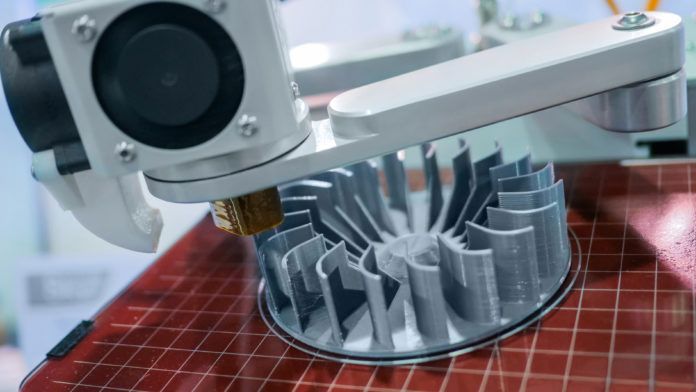Louisiana institutions found themselves at the forefront of a brave new world in advanced manufacturing after landing a five-year, $20 million award from the National Science Foundation earlier this summer.
The money will enable an LSU-led consortium dubbed the Louisiana Materials Design Alliance in the design of complex alloys and polymers specifically for 3D printing, otherwise known as additive manufacturing. Researchers at LSU and four other Louisiana institutions—Louisiana Tech University, Southern University, ULL and Tulane University—hope to use advanced machine learning to study the characteristics of novel materials and test how they react under pressure and heat during manufacturing.
Michael Khonsari, LSU professor and associate commissioner for research for the Louisiana Board of Regents, says LMDA’s work will respond to heightened demand for metal and plastic products that have fewer defects and a longer useful life.
The newly-minted team met virtually in August to plan their strategy, along with NSF members, external evaluators and facilitators. However, their enthusiasm was tempered somewhat by the prospect that COVID-19 could hinder their progress. “We defined deliverables, milestones and tasks,” Khonsari says. “We also outlined difference scenarios in regards to COVID-19—what if it remains the way it is now, gets better or worse.
“After all, this endeavor involves a considerable amount of coordination, laboratory experiments etc. What if we are unable to send students to the lab?”
Ultimately, LSU hopes to leverage investments it made in 3D printing five years ago following a previous NSF award. “That award enabled us to build the infrastructure that we needed, such as 3D printing facilities (at LSU) and the Institute for Micromanufacturing Facilities (at Louisiana Tech),” Khonsari says.
The newest grant will pay for the hiring of additional faculty, new technology and equipment, and serve to further strengthen ties with industry. ExxonMobil, Valero, Dow Chemical, Shell and others have sponsored engineering research the past. “We’ll have industry members on our advisory board,” he adds. “These are folks who are going to be involved in the educational aspects of this. For this particular project, they need to use the 3D printing facilities to show that the research works.”
While senior engineering students have performed research in additive manufacturing for years as part of senior design projects, they’ll now be enable to incorporate 3D printing into the process. Graduates will showcase their research to industry and a panel of industry members will review and approve designs to be created as a working prototype.
“This project is an excellent example of research addressing key knowledge gaps in an area of focus for the nation,” says Ann Stapleton, NSF’s Established Program to Stimulate Collaborative Research (EPSCoR) director, in a press release. “The team’s research on improved prediction of material performance in additive manufacturing will be fully integrated with coursework, testbed development and workforce development activities.
“The team will receive extensive feedback from key industry leaders,” she adds. “This project is a superb example of synergistic, interrelated research and educational activities that support a larger national scientific priority area.”
LAMDA institutions will expand the experimental resources within user facilities available to Louisiana institutions and industry. “The project’s dual emphasis on research and education ensures the broadest possible reach of the work, as we develop the knowledge needed by industry users as well as the talent needed to support widespread adoption,” says Kim Hunter Reed, commissioner of higher education.
In the process, they hope to lay the foundation for smart additive manufacturing process monitoring and create new knowledge linking complex materials structures to their mechanical and functional performance. The major outcomes of this project will be a materials design framework guided by machine learning, a framework to assess structural integrity, and a diverse and highly skilled STEM workforce for Louisiana.
“This will propel the state to a leadership role in additive manufacturing materials research and education,” Khonsari says, “and build a bridge between researchers developing materials and efficient manufacturing methods and small and large end-users in industry.”



